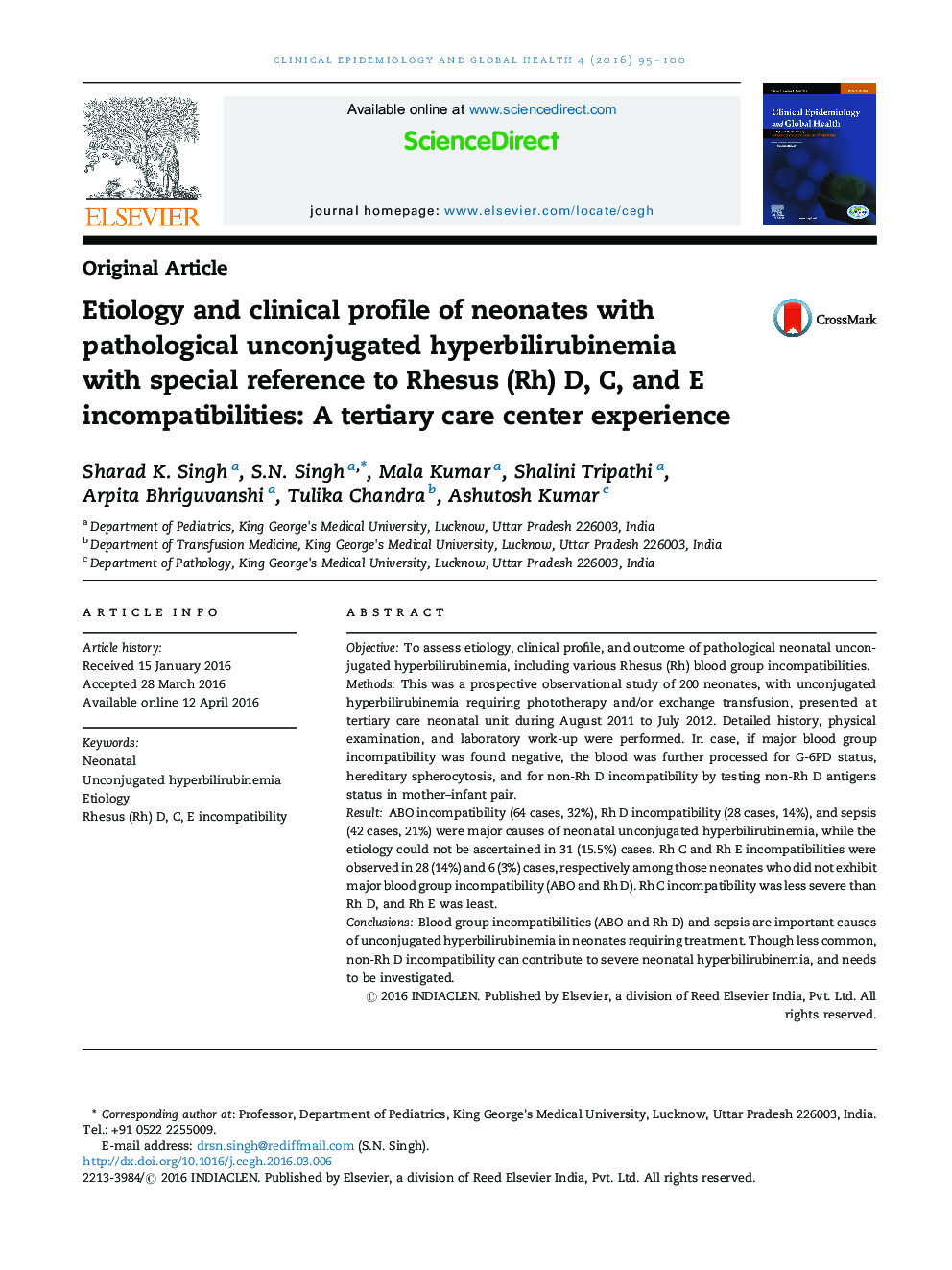| Article ID | Journal | Published Year | Pages | File Type |
|---|---|---|---|---|
| 3396230 | Clinical Epidemiology and Global Health | 2016 | 6 Pages |
ObjectiveTo assess etiology, clinical profile, and outcome of pathological neonatal unconjugated hyperbilirubinemia, including various Rhesus (Rh) blood group incompatibilities.MethodsThis was a prospective observational study of 200 neonates, with unconjugated hyperbilirubinemia requiring phototherapy and/or exchange transfusion, presented at tertiary care neonatal unit during August 2011 to July 2012. Detailed history, physical examination, and laboratory work-up were performed. In case, if major blood group incompatibility was found negative, the blood was further processed for G-6PD status, hereditary spherocytosis, and for non-Rh D incompatibility by testing non-Rh D antigens status in mother–infant pair.ResultABO incompatibility (64 cases, 32%), Rh D incompatibility (28 cases, 14%), and sepsis (42 cases, 21%) were major causes of neonatal unconjugated hyperbilirubinemia, while the etiology could not be ascertained in 31 (15.5%) cases. Rh C and Rh E incompatibilities were observed in 28 (14%) and 6 (3%) cases, respectively among those neonates who did not exhibit major blood group incompatibility (ABO and Rh D). Rh C incompatibility was less severe than Rh D, and Rh E was least.ConclusionsBlood group incompatibilities (ABO and Rh D) and sepsis are important causes of unconjugated hyperbilirubinemia in neonates requiring treatment. Though less common, non-Rh D incompatibility can contribute to severe neonatal hyperbilirubinemia, and needs to be investigated.
